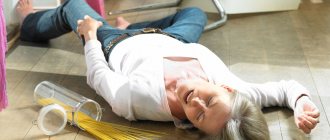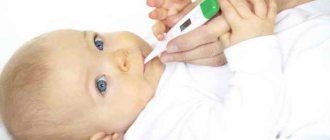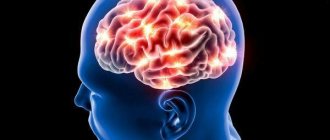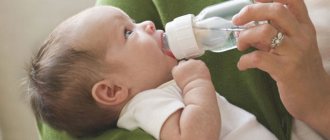In this article we will learn what Nocturnal Epilepsy or Sleep Epilepsy is, we will find out what seizures can occur during sleep, what are the differences between epilepsy in sleep and sleep disorders. Epileptic seizures in relation to the time of day can be: only nocturnal attacks, mainly nocturnal, attacks at any time of the day, only daytime. The characteristic time of epilepsy attacks during sleep is when falling asleep or waking up, especially with early forced awakening or sleep deprivation (sleep deprivation).
It is known that a third of all patients with epilepsy (according to various sources, 10-45%) have only epileptic seizures at night or occur mainly during sleep, that is, about 30% have epilepsy during sleep.
Patients have dubbed this sleep-related epilepsy nocturnal epilepsy. Although such a term has not been officially introduced in epileptology.
There are a number of terms related to sleep-related events:
- epileptic seizures associated with sleep;
- nocturnal attacks;
- nocturnal paroxysms;
- attacks when falling asleep (on awakening, against the background of sleep deprivation);
- paroxysms during sleep of non-epileptic origin;
- parasomnias (somnambulism = sleepwalking, somnylakia = sleepwalking);
- insomnia;
- sleep disorders;
- hyperkinesis;
- benign myoclonus when falling asleep and other options.
So many terms related to nocturnal attacks indicate the variability of manifestations during sleep, the high frequency of paroxysms, and the complexity of diagnosis. Combinations of several of these and other disorders are possible with and without epilepsy.
Nocturnal epilepsy causes
The likelihood of epilepsy attacks occurring during sleep is determined by sleep physiology. Let's find out what happens in the cerebral cortex during epilepsy during sleep.
During sleep, the excitability of nerve cells changes, their work becomes asynchronous.
Sleep may be disturbed with epilepsy, more often with focal forms.
During epileptic seizures, the EEG shows an increase or increase in the epiactivity index during the slow-wave sleep phase. During the rapid eye movement sleep phase, there is a violation of the synchronicity of bioelectrical activity. Due to the asynchrony of discharges during the rapid eye movement sleep phase, the spread of discharges to other parts of the brain is suppressed.
When sleep phases are disturbed, with a shortening of the rapid eye movement sleep phase, excitability is noted, and on the EEG there is an increase in the spread of discharges, which is sometimes called a decrease in the threshold of convulsive readiness.
Sleep deprivation causes increased sleepiness, which promotes falling asleep during EEG recording. When recording an electroencephalogram during sleep, pathological activity is more likely to be detected.
In addition to sleep deprivation, epiactivity can be provoked by forced awakening, rich food, and certain medications (mild sedatives).
Classification features of dissociative convulsions
In contrast to scientifically substantiated convulsions, the dissociative format of deviation is much less common and is more characteristic of children. Outwardly, it is somewhat similar to what happens to a person during the classic development of convulsive syndrome, but they do not pose a significant danger to health.
Experts record a similar phenomenon more often in a child who is trying to achieve what he wants from others through such a specific approach. He will hit the floor with his hands, fall on the ground, start hysterical or make strange shrill sounds.
The provocateurs for this are standard everyday situations, such as a mother’s reluctance to buy a new toy, or a demand to clean up after herself. The screams usually subside on their own when the baby calms down on its own. A couple of minutes are enough for this, but in rare cases those around you will have to listen to the baby’s lamentations for about an hour.
Most often, the onset of another attack is provoked by crowded places. Parents feel ashamed of their offspring, so to resolve the conflict they follow the lead of the young manipulator. But this is a question of psychology, not a convulsive disorder.
The criteria for diagnosis when a naughty child twitches are:
- absence of obvious deviations in psychology;
- absence of signs of epilepsy, including hereditary predisposition;
- the relationship between the manifestation of an attack and the onset of a stressful situation;
- no tongue biting, foaming at the mouth, involuntary urination at the end of the attack;
- absence of serious injuries during a seizure - fractures, sprains, dislocations, bruises.
Differential diagnosis is simple - if a child is driven to dissociative convulsions by a whim, then one should work on correcting behavior with the help of educators and psychologists.
Generalized epilepsy and sleep
Seizures during sleep are characteristic of idiopathic generalized epilepsy. This connection is explained by damage to thalamocortical structures.
In idiopathic generalized epilepsy, sleep deprivation stimulates epiactivity and increases the likelihood of an epileptic seizure.
Attacks more often occur when falling asleep or waking up, especially with early forced awakening.
Thus, in the first 15 minutes - 1 hour after getting up, patients with juvenile myoclonic epilepsy experience epileptic seizures: myoclonus (usually in the form of twitching in the hands) or, especially with ineffective therapy, generalized tonic-clonic seizures.
In epileptic encephalopathies with electrical status of slow-wave sleep (ESES), even from the name it is clear that the manifestations of the disease are associated with sleep. A feature of these forms of epilepsy is the presence of continued epileptiform activity with a high epiactivity index (more than 80%) during the slow-wave sleep phase. And during the rapid eye movement sleep phase, the epiactivity index decreases.
Nocturnal seizures in epileptic encephalopathies with electrical status of slow-wave sleep can be in the form of: focal motor seizures during sleep, generalized tonic-clonic seizures. Daytime attacks, both focal and generalized, are also possible.
Symptomatic secondary generalized epilepsy is less dependent on sleep-wake cycles. With this form of epilepsy, epileptiform activity and seizures can occur at any time of the day with equal probability.
Leg cramps during pregnancy
Pregnancy is a happy and challenging time. When hormonal changes occur, weight gain and decreased activity. A woman develops varicose veins.
Muscle spasms should be given special attention because they are an anxiety disorder. Cramps indicate a lack of microelements, excess fluid loss (for example, a period of toxicosis). The increasing size of the uterus can put pressure on the inferior vein. At the first manifestations of cramps, you should immediately go to the doctor so that a specialist can identify and help eliminate the cause of night cramps as soon as possible.
Nocturnal epilepsy symptoms
With autosomal dominant nocturnal frontal lobe epilepsy, the following nocturnal attacks are observed:
- attacks upon sudden awakening at night, can be short, sometimes missed by patients, can be accompanied by screaming, affect (fear);
- hypermotor attacks (high-amplitude, fanciful movements), tonic (stretching, arching), clonic (sharp contractions of the muscles of the limbs, torso), consisting of cyclic movements (boxing, pedaling) or pushing;
- nocturnal attacks similar to sleepwalking, accompanied by fear (for example, jumping out of bed, running, looking around, screaming, speaking articulate phrases);
- There may be various combinations of these attacks during sleep.
Features of symptoms of autosomal dominant nocturnal frontal lobe epilepsy:
- family history of epilepsy is burdened (relatives have cases of epilepsy or parasomnias);
- onset of epilepsy at puberty (10-14 years);
- There may be only nocturnal attacks or mainly during sleep with rare daytime ones;
- attacks are frequent, there can be 1-5 attacks per night every night;
- The attack is provoked by emotional and physical stress, weather changes, menstruation, sleep disturbances;
- oxcarbazepine and combinations of antiepileptic drugs are used in treatment; but a third of patients are drug-resistant.
“Nocturnal epilepsy in adults”, “Nocturnal epilepsy in children”, “sleep epilepsy” - this is how patients often call Autosomal dominant nocturnal frontal lobe epilepsy. Such epilepsy can begin at any age: in childhood and in adulthood. In 30% of patients it is resistant to antiepileptic drugs, so it can continue throughout the patient’s life. The use of polytherapy of this form can achieve only a slight reduction in the strength, frequency and duration of nocturnal epilepsy attacks.
How to recognize whether seizures are dangerous and what caused them
To begin with, let's divide all seizures into generalized, when the whole body is subject to a convulsive attack, and local, when only one area is affected - for example, the calf muscle.
There are also tonic and clonic seizures. The first ones are more like not a cramp, but a spasm, in which the body seems to be frozen in one position. A classic example of a tonic seizure is opisthotonus in tetanus. Such seizures are rare and are always caused by a serious illness: tetanus, neuroinfection, brain tumors.
The second option is clonic convulsions, in which the body makes frequent chaotic movements, that is, it beats in a typical convulsive seizure, as most of us imagine it.
This option can be encountered much more often in life - these include febrile convulsions when the temperature rises in young children, and epileptic seizures in people of any age. If your leg is cramped or your biceps is constantly twitching, this is unpleasant, but not dangerous.
If we are talking about generalized seizures, a person needs quick medical attention. Although neurologists like to repeat that a seizure is not as terrible as it looks from the outside.
Sleep epilepsy or sleep disorder
How to distinguish between nocturnal seizures, are seizures a manifestation of epilepsy during sleep or is it a sleep disorder?
Differential diagnosis of paroxysmal events during sleep
To clarify the nature of nocturnal attacks, an objective research method is video EEG polysomnography. An option for diagnosing epilepsy in sleep is video EEG monitoring; studies are more informative after sleep deprivation.
If during a paroxysm epiactivity is simultaneously recorded on the EEG of sleep, then these paroxysms are of epileptic origin, that is, they are epileptic seizures in sleep.
Night attacks can be short and not accompanied by epileptiform EEG discharges; then these disorders of non-epileptic origin are more often classified as parasomnias.
Sleep disorders are often associated with certain stages of sleep and have a characteristic clinical picture.
At an appointment with an epileptologist, there are also options when the patient has nocturnal seizures and epilepsy, but this is not epilepsy.
Let us give a clinical example of seizures during sleep, accompanied by epileptiform activity on the EEG, but not related to epilepsy.
A 3-year-old boy came to see him with nocturnal paroxysms in the form of sleepwalking and sleep-talking. According to my mother: “2 hours after falling asleep, he gets out of bed, says, and walks around the apartment. It's like he's looking for something. More often than not, something is unclear. Some of the words can be understood; they are associated with sleep, with the events of the day. Sometimes the son laughs, cries, moans, is afraid, and is in a hurry. The eyes are open, but the gaze is unconscious or “wild”. After about 10 minutes I manage to calm him down and put him to bed. He falls asleep calmly. After treatment with sedatives, there was a break in his sleepwalking for 4 months, and then gradually became more frequent up to 2-4 times a month.” On the EEG, the patient has epiactivity of the type of benign epileptiform discharges of childhood in a small amount in the background and during sleep. When conducting an EEG with sleep deprivation: during sleep recording, neurophysiologists described a paroxysm (sat down on the bed, did not react, said a few words), but at this moment no epiactivity was noted in the EEG. A diagnosis was made: Parasomnias (sleeping, sleeping). Concomitant diagnosis: Benign epileptiform disorders of childhood. There are currently no data for active epilepsy. Antiepileptic drugs were never prescribed to this patient. Emphasis was placed on the need to maintain a rational daily routine. In therapy, he received sedatives or nootropics in age-related doses in the form of monotherapy (pantothenic acid, adaptol, atarax, phenibut, decoction of sedative herbs, novopassit) in courses of 1-2 months, 1-3 courses per year. The response to such therapy is always good: the parasomnias described above completely stopped for 4-8 months or decreased significantly; could be of an erased nature (sits on the bed in a dream, sits for 3-5 seconds, lies down and sleeps further; no more than 1-2 times a month). The child has been observed by an epileptologist for several years. Over time, complaints about sleep disturbances gradually become less and less. According to the EEG, epiactivity of the DERD type persists: in different recordings it may be in a small index or absent.
Medical explanation of the phenomenon
In most cases, it is impossible to find the original source that provoked a strange attack without the intervention of a qualified doctor. That is why it is so important to learn to identify at least the main causes of the lesion, and also to know how to help the victim who is faced with a similar manifestation.
In some cases, patients who simply experienced a sudden increase in temperature may have a seizure. This scenario is considered one-time. And chronic epilepsy involves the repetition of threatening symptoms for the victim on a regular basis, and it is almost impossible to predict when the next convulsive wave will begin.
From a physiological point of view, convulsions are a neurological pathology. It is characterized by a sharp involuntary contraction of muscle fibers. It is not possible to control this process, which aggravates the situation, sometimes even becoming a cause of death.
Content:
- Medical explanation of the phenomenon
- The underlying reasons for the development of convulsive syndrome
- Classification features of dissociative convulsions
- Death convulsions and spasms during sleep
- Diagnosis and subsequent treatment
- First aid and prevention
Adding to the problem is the fact that certain muscle groups are not always susceptible to spasm. With extensive damage, absolutely all muscle fibers go out of control. The victim loses control of his own body, unable to control his movements. From the outside it looks like a random set of gestures.
In most of the cases recorded in clinical practice, people also have to deal with classic seizures. They cause the muscles to begin to contract, which causes unbearable pain. Acute pain permeates the entire body, causing the muscles to literally turn to stone. Health-threatening convulsions affect both female and male bodies equally.
The phenomenon simply does not happen, being caused either by powerful external negative factors such as an electric shock, or is a consequence of some kind of pathology. In any case, the first thing to do when detecting this symptom in a victim is to urgently call an ambulance, and then deal with what was the primary source of the lesion.
Only an experienced doctor will be able to establish the general clinical picture in a hospital setting, taking into account the victim’s complaints along with the results of laboratory tests. Based on the medical history and test results, it will be possible to create an effective therapeutic course.
What is the difference between nocturnal epileptic seizures and parasomnias?
- parasomnias often occur in early childhood (from 1-3 years to 12 years), and nocturnal epileptic seizures develop later and can begin at any age;
- parasomnias are longer lasting (on average duration is 5-30 minutes) compared to nocturnal epileptic attacks (on average duration is 20 seconds - 5 minutes);
- parasomnias are more variable, epileptic seizures during sleep are more stereotypical (similar to each other);
- parasomnias gradually cease on their own or with sedative therapy by the age of 12; epileptic seizures during sleep respond only to antiepileptic therapy;
- After parasomnias, daytime drowsiness is rarely observed, and after a night attack of epilepsy, lethargy, drowsiness, and “weakness.”
Treatment
If your child has symptoms of seizures, you should:
provide the child with peace;
lay on a flat and hard surface, turn your head to the side;
if breathing stops, you should wait until the end of the attack and perform artificial respiration;
provide the child with access to fresh air;
try to lower the temperature yourself by rubbing;
You must not leave your child unattended.
For adults with seizures, it is recommended:
take a vertical position,
knead the area affected by the cramp with your fingers,
apply a warm compress or ice,
In case of local convulsions, it is important not to allow the victim to clench his teeth tightly.
If the symptoms of a seizure do not go away on their own, you must call an ambulance, until which first aid should be provided according to the above scheme. In the hospital, qualified doctors will provide treatment based on the diagnosed disease. Usually, drugs used for convulsions are phenobarbital, diphenine, hexamidine, etc. For professional convulsions, local massage, thermal procedures, and adherence to a work-rest regime help.
Source
What can nocturnal epilepsy be confused with?
Sleep disorders similar to sleep epilepsy:
- Parasomnias (somnambulism, night terrors, waking up with confusion).
- Rhythmic motor acts during sleep (benign sleep myoclonus, involuntary movements of the limbs, bruxism = teeth grinding).
- Enuresis (bedwetting).
- Disturbance of the breathing rhythm during sleep (sleep apnea, including physiological apnea in children, obstructive apnea in adults).
- Movements during rapid eye movement sleep.
- Automatisms in sleep (swinging, yactation).
- Nocturnal “paralysis” (or nocturnal “intoxication”).
• Other diseases
In some diseases, in particular endocrine diseases, the threshold of muscle excitability decreases. As a result, their involuntary contraction occurs even with small impulses. This condition can also occur with severe fatigue or taking certain medications.
Insufficient supply of oxygen and nutrients to muscle tissue can lead to cramps. This is possible, for example, with varicose veins, thrombophlebitis, obliterating atherosclerosis, diabetes mellitus, flat feet and a number of other diseases.











